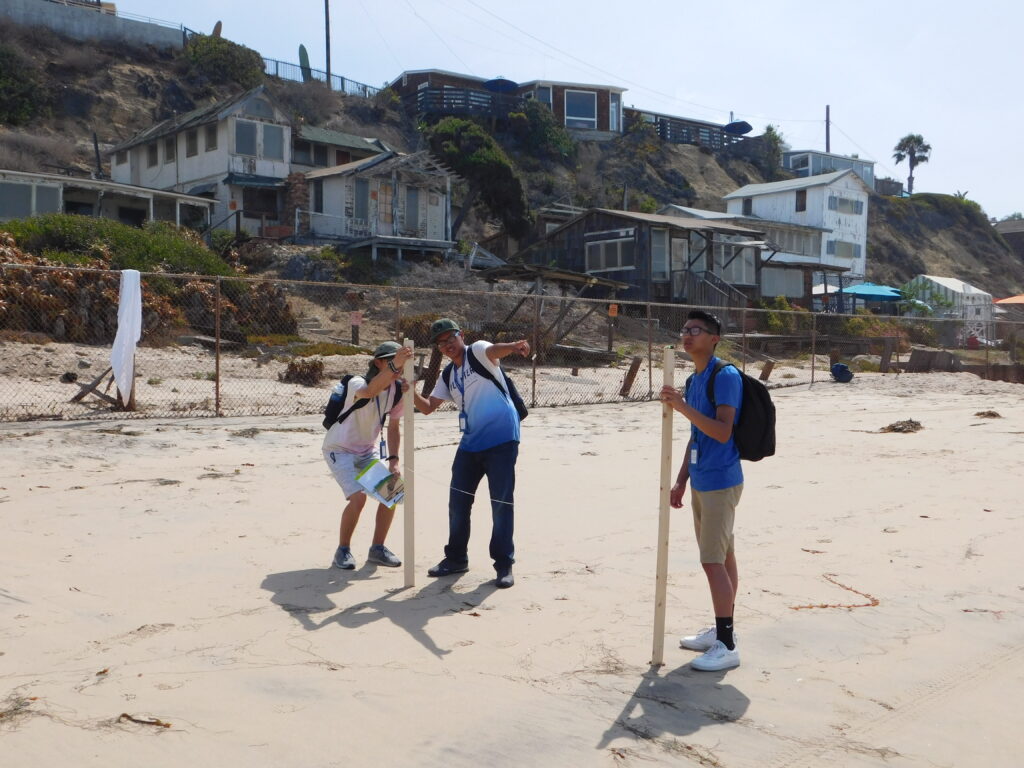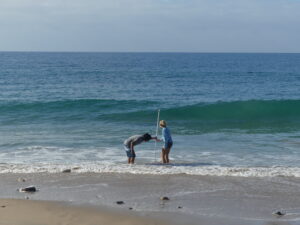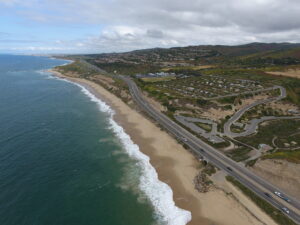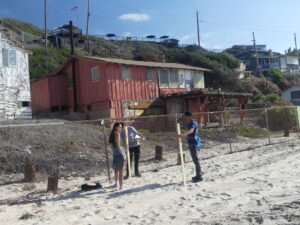Studying a Changing Coastline
Crystal Cove Conservancy’s new Coastal Dynamics initiative introduces students to coastal engineering at Crystal Cove State Park.

California’s beaches are one of our most valued and iconic natural resources, but the pressures of hardened coastlines and increased erosion have put them at growing risk. As beaches erode and communities are forced to decide how best to protect them, it has become increasingly critical for our next generation to be able to think critically about the multiple complex factors impacting our coastline and design innovative solutions to protect them.
Crystal Cove Conservancy is uniquely positioned to address this critical need through our new Coastal Dynamics education program, which puts junior high and high school students from low-income schools in the shoes of coastal engineers to study how Crystal Cove State Park’s beaches are changing. The one-of-a-kind Crystal Cove Historic District, with 46 beachfront cottages located mere steps from the water’s edge, offers an excellent context to challenge students to think about how resource managers and communities need to balance complicated issues when designing solutions to coastal change, such as protecting property, promoting public access, and reducing beach erosion.
 The Coastal Dynamics program introduces students to how coastal engineers approach real-world problems, while also providing a curriculum model that science and engineering teachers can use to integrate environmental engineering and coastal erosion topics into their classrooms. Many participants come from low-income schools in inland communities who, while enthusiastic about environmental protection and the beach, do not traditionally have access to outdoor STEM experiences like this.
The Coastal Dynamics program introduces students to how coastal engineers approach real-world problems, while also providing a curriculum model that science and engineering teachers can use to integrate environmental engineering and coastal erosion topics into their classrooms. Many participants come from low-income schools in inland communities who, while enthusiastic about environmental protection and the beach, do not traditionally have access to outdoor STEM experiences like this.
During the extended program, students are introduced to beach systems concepts in the classroom through Next Generation Science Standards-aligned lesson plans. They then visit Crystal Cove State Park on a field trip to collect data for ongoing beach monitoring projects developed in partnership with environmental engineers from UC Irvine, such as using Emery boards to measure the shape of Crystal Cove’s beach and monitoring the size and shape of waves.
After returning to the classroom, students use an open-source version of Matlab to develop a computer model showing how the beach has changed over time. They work in small teams to evaluate how erosion is impacting the beach’s natural cycles and explore possible solutions to mitigate its future impact.

Photo Credit: UCI Flood Lab
The Coastal Dynamics education program has been developed in collaboration with Dr. Brett Sanders and his research group, the UCI Flood Lab, at UC Irvine’s Samueli School of Engineering. Dr. Sanders and his team study coastal flood risks and work with trans-disciplinary research teams to develop modeling tools that can help communities understand and take action on the potential impacts of coastal flooding and erosion.
Dr. Sanders also teaches a new graduate-level course on beach dynamics at UC Irvine, which introduces engineering students to the erosion-related challenges faced by California State Parks in Orange County.
One of the most exciting parts of the Coastal Dynamics program is that the data collected by junior high and high school students can help to calibrate and validate models of beach erosion and shoreline change, helping researchers to better understand coastal dynamics at Crystal Cove, and supporting improved coastal modeling across Southern California. The monitoring program also has relevancy for other beaches in threat of erosion, and we are currently working with California State Parks to expand the monitoring program to other beaches in the Orange Coast District, including San Onofre State Beach.
 In the future, once the final North Beach restoration is completed, the Coastal Dynamics program will undergo one final evolution. Cottage #20, located at the very northern end of the Historic District, will be converted into a dorm-style overnight facility to host the program. Small groups of high school students from inland communities will be able to spend three days and two nights immersed in coastal engineering topics at Crystal Cove, while they spend their nights sleeping soundly mere feet from the water’s edge.
In the future, once the final North Beach restoration is completed, the Coastal Dynamics program will undergo one final evolution. Cottage #20, located at the very northern end of the Historic District, will be converted into a dorm-style overnight facility to host the program. Small groups of high school students from inland communities will be able to spend three days and two nights immersed in coastal engineering topics at Crystal Cove, while they spend their nights sleeping soundly mere feet from the water’s edge.
Are you a teacher who would like to get your students involved in the Coastal Dynamics program?
For more information or to sign up, please contact the Conservancy by emailing info@crystalcove.org.
